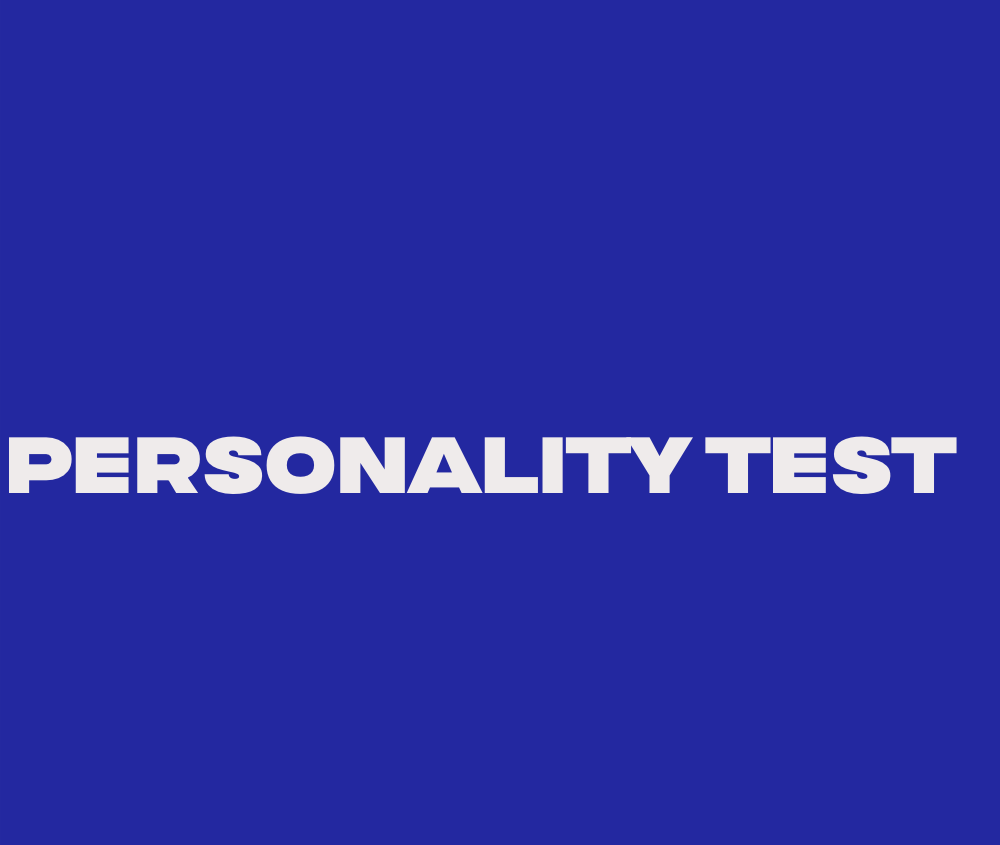Enneagram of Personality
Unveiling the Enneagram's Demonic Origins
Delve into the mysterious ties between the Enneagram and demonic forces, inviting you to question its spiritual essence.

As we delve into the complex history of the Enneagram, we are faced with the need to address the darker aspects hidden beneath its facade.
The notion of demonic influences intertwined with this popular personality system raises intriguing questions about its true nature.
Unveiling the enigmatic past of the Enneagram beckons us to reassess our understanding of this tool's spiritual underpinnings.
Are we ready to confront the darker aspects of this seemingly enlightening framework?
Key Takeaways
- The Enneagram's alleged occult ties spark suspicions among religious communities.
- Critics caution against potential spiritual dangers associated with the Enneagram teachings.
- Misconceptions and misinterpretations contribute to the controversy surrounding the Enneagram's origins.
- The system's intricate symbol and esoteric nature fuel speculations about darker influences.
The Enneagram's Historical Origins
The Enneagram traces its historical origins back to G.I. Gurdjieff in the 1920s, intertwining Eastern mysticism with Western psychology. This intricate system delves into the depths of human nature, categorizing individuals into distinct personality types. Each of these types is characterized by unique motivations, fears, and behavioral patterns, offering profound insights into the complexities of the human psyche.
Through the Enneagram, we gain a deeper understanding of ourselves and others, unraveling the intricacies of our personalities and shedding light on our innermost drives. By recognizing our dominant personality type, we embark on a journey of self-discovery and personal growth, striving to transcend our limitations and cultivate our strengths.
As we explore the Enneagram's historical roots, we unearth a rich tapestry of wisdom that has evolved over decades, blending ancient philosophies with modern psychological frameworks. This fusion of Eastern spirituality and Western science provides a comprehensive framework for exploring the depths of our personalities and illuminating pathways towards self-realization.
Deconstructing the Enneagram's Spiritual Roots

Exploring the Enneagram's spiritual roots reveals a complex tapestry of influences that have sparked debates and concerns among various religious communities. The Enneagram's origins intertwine with diverse philosophies, leading to a rich yet contentious heritage. Here are five key points to consider:
- The Enneagram's ties to G.I. Gurdjieff in the 1920s hint at its enigmatic beginnings, stirring curiosity and skepticism.
- Criticisms linking the Enneagram to occult practices highlight the esoteric nature that continues to perplex many seekers.
- The adoption of Enneagram teachings by Roman Catholics has ignited debates within the Christian community, raising theological questions.
- Alarms raised by authors and theologians about potential spiritual dangers caution enthusiasts about delving too deeply into the Enneagram's mysteries.
- The controversial blend of Eastern mysticism and Western psychology in the Enneagram personality system adds layers of complexity, inviting scrutiny and reflection.
Uncovering the Dark Side of the Enneagram
Delving into the Enneagram's shadowy origins reveals a tangled web of controversy and suspicion surrounding its connection to the occult and alleged demonic influences. Critics argue that the Enneagram's intricate symbol and esoteric nature hint at darker origins, sparking concerns among certain religious groups about its potential ties to malevolent forces. However, these accusations often stem from misconceptions and misinterpretations of the Enneagram's history rather than concrete evidence.
To further understand the Enneagram's perceived dark side, let's explore a comparison table highlighting both the positive and negative aspects associated with this popular personality typing system:
| Positive Aspects | Negative Aspects |
|---|---|
| Self-awareness | Allegations of demonic origins |
| Personal growth | Suspicions of sinister influences |
| Understanding others | Misunderstandings of its history |
| Emotional intelligence | Accusations of occult ties |
Examining these contrasting facets of the Enneagram can provide a more nuanced perspective on its complexities and controversies surrounding its role in understanding personality.
The Enneagram's Alleged Occult Connections
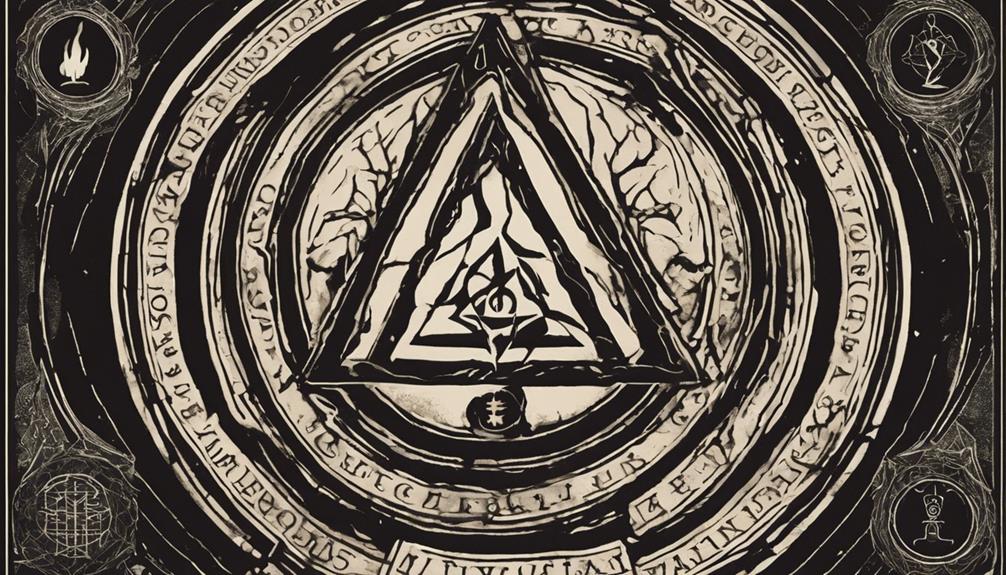
Uncovering the alleged occult connections of the Enneagram reveals a web of suspicion surrounding its esoteric origins and teachings. When delving into the Enneagram's alleged occult connections, one encounters a labyrinth of concerns and implications:
- Enneagram tests, often seen as tools for self-discovery, may conceal esoteric knowledge that could lead to spiritual deception.
- The Enneagram's intricate symbol, with its nine interconnected points, hints at hidden mystical meanings that could sway unsuspecting seekers.
- Critics warn that the Enneagram's ties to Gurdjieff's teachings open the door to occult philosophies that may corrupt one's spiritual journey.
- Those wary of the Enneagram's alleged occult connections fear that its widespread adoption could lead many astray from traditional religious teachings.
- The allure of the Enneagram tests, promising insights into personality and behavior, may mask darker influences that could subvert one's quest for true understanding.
Examining the Enneagram's Demonic Influences
Some individuals assert that the Enneagram's alleged demonic origins are rooted in its symbol and connections to the occult. Critics warn against the teaching of the Enneagram, claiming it carries demonic influences that can lead individuals astray. These accusations often arise from a misunderstanding of the Enneagram's historical development and its symbolism, which some interpret as having dark connotations. The Enneagram's association with esoteric teachings and practices further fuels allegations of demonic influences, as critics point to these connections as evidence of its potentially harmful spiritual implications.
The ongoing debate surrounding the Enneagram's demonic origins highlights the diverging perspectives within the community. While some view it as a tool for self-discovery and personal growth, others caution against its usage due to concerns about its spiritual underpinnings. As individuals navigate this complex terrain, it becomes essential to critically examine the teachings of the Enneagram and discern the potential influences it may have on one's spiritual journey.
Frequently Asked Questions
Does the Enneagram Have Pagan Origins?
Yes, the Enneagram doesn't have pagan origins. Its roots trace back to early Christian monasticism with the desert fathers. While its symbol may evoke occult associations, these are misconceptions.
Some mistakenly link it to the Satanic pentagram, but this is unfounded. Claims of demonic ties are prevalent but lack historical basis.
Understanding the Enneagram's true origins sheds light on its rich history and purpose for personal growth.
What Are the Spiritual Roots of the Enneagram?
We've delved into the Enneagram's spiritual roots, tracing them back to the teachings of the desert fathers. These origins provide a rich tapestry of wisdom that influences our understanding of this powerful tool for personal growth.
The Enneagram's essence lies in ancient insights that offer profound insights into human nature and behavior. By exploring its spiritual heritage, we unlock a deeper connection to ourselves and others.
What Is the True Origin of the Enneagram?
The Enneagram's true origin can be traced back to the desert fathers in early Christian monasticism. It isn't linked to the Satanic pentagram or demonic practices, despite misconceptions.
Modern versions weren't developed by St. Evagrius or St. Ignatius, as some claim. Some Christians associate it with the occult due to its symbol, leading to misunderstandings.
Claims of demonic, evil, and occult origins lack historical basis and are unfounded.
Is the Enneagram Biblically Based?
We believe the Enneagram isn't biblically based. Critics argue that its origins and teachings lack foundation in the Bible, departing from fundamental truths. Some warn against its focus on self over God. Connections to occult practices raise concerns among believers.
The Enneagram is seen as subjective and potentially deceptive. These factors lead us to conclude that the Enneagram doesn't align with biblical principles.
Can Claudio Naranjo’s Insights Shed Light on the Demonic Origins of the Enneagram?
Claudio Naranjo’s insights into enneagram by claudio delve into the spiritual roots of personality structures, suggesting the enneagram’s symbols may reflect ancient wisdom on humanity’s virtues and vices. His perspectives encourage a deeper exploration of the enneagram’s potential origins and their connection to the human psyche.
Conclusion
As we delve deeper into the origins of the Enneagram, we're left wondering about the mysterious forces at play. Could it be mere coincidence that its roots are shrouded in darkness and occult ties? Or is there a deeper, more sinister truth waiting to be unveiled?
The Enneagram's journey from spiritual tool to potentially demonic influence leaves us questioning what lies beneath the surface of this enigmatic personality typology. The answers may just be more chilling than we ever imagined.
Felicity, our Author, pens in-depth articles and guides that delve into the heart of personal discovery. Her narrative-driven approach weaves together theory, practice, and personal anecdotes, making the journey of self-exploration both relatable and inspiring. Felicity’s contributions help illuminate the path for those seeking a deeper understanding of themselves and their relationships.
Enneagram of Personality
Enneagram 4 and 8 Relationship Dynamics Explained
Yearning for insight into the captivating dance between Enneagram 4s and 8s?
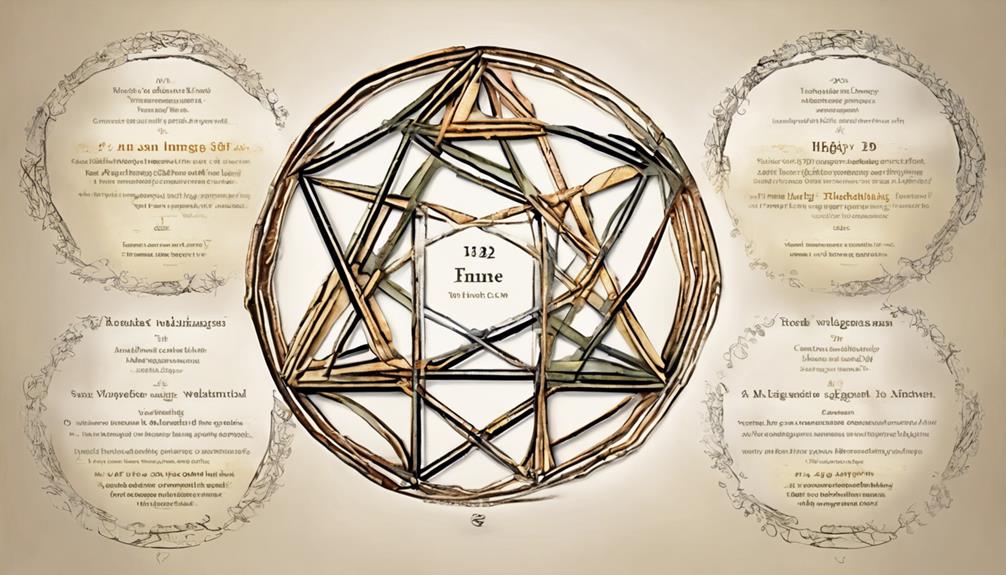
In relationships between Enneagram 4 and 8, it is commonly believed that opposites attract. The complex interplay between the sensitive 4 and the assertive 8 can result in fascinating dynamics.
But what happens when these two powerful personalities clash? Join us as we explore the complexities and nuances of how Enneagram Types 4 and 8 navigate their relationship terrain, uncovering insights that may surprise you and shed light on the intricacies of this compelling pairing.
Key Takeaways
- Understanding diverse communication styles and conflict resolution is crucial for harmony.
- Trust building relies on encouragement, vulnerability, honesty, and mutual support.
- Growth opportunities include enhancing emotional intelligence, improving communication skills, and embracing conflict.
- Valuing unique qualities, navigating challenges, and fostering emotional intimacy are essential for a strong relationship.
Core Dynamics of 4 and 8
When examining the core dynamics of Enneagram 4 and 8 relationships, it's crucial to delve into the intricate interplay of their contrasting yet complementary personality traits. Type Fours are known for their sensitivity, compassion, and appreciation for the arts, while Type Eights are characterized by their decisiveness, justice-seeking nature, and value of independence. Despite these differences, both Fours and Eights share a profound capacity to love deeply and recognize beauty in the world.
In understanding the motivations of each type, we uncover the key to unlocking effective communication in a 4 and 8 relationship. Fours, often feeling misunderstood and craving recognition, can find solace in the straightforward and decisive nature of Eights. On the other hand, Eights, who value independence and seek justice, can appreciate the emotional depth and compassion that Fours bring to the relationship. This compatibility rooted in their differing yet harmonious motivations lays the foundation for a dynamic that can thrive on mutual understanding and respect.
Communication Styles Analysis

In analyzing the communication dynamics between Enneagram Type 4s and Type 8s, it is essential to recognize the assertive nature of Type 8s and the loyal communication style of Type 4s. Eights tend to be assertive, competitive, and confident communicators, often coming across as direct and bold. On the other hand, Fours are known for their respectful, conforming, and loyal approach to communication, emphasizing depth and authenticity in their interactions.
| Communication Aspect | Type 4s | Type 8s |
|---|---|---|
| Expression of Emotions | Emotionally rich, | Direct and assertive, |
| but may struggle | may find it easier to | |
| with anger display | express anger openly. | |
| Conflict Resolution | Seek harmony and | Tend to confront |
| Style | understanding in | conflicts directly, |
| conflicts, may avoid | preferring a direct | |
| confrontation | approach. |
Understanding these differences in communication styles is crucial for creating harmony and effective communication between Fours and Eights. Type 4 compatibility with Type 8 involves acknowledging and respecting these diverse approaches to expression and conflict resolution.
Conflict Resolution Strategies
Recognizing the distinct communication styles of Enneagram Type Fours and Type Eights sets the foundation for implementing effective conflict resolution strategies in their relationships. Eights tend to be direct and assertive, while Fours lean towards introspection and emotional expression.
When conflicts arise, it's crucial for both types to engage in clear communication and open dialogue. Remaining calm and considering each other's perspectives can pave the way for effective conflict resolution. Finding compromises and working together to address differences is key to preventing the escalation of conflicts between Eights and Fours.
Encouraging openness to each other's viewpoints fosters understanding and support, essential elements in resolving conflicts. By maintaining a focus on supporting each other and valuing the unique qualities each brings to the relationship, Eights and Fours can navigate conflicts with empathy and mutual respect, strengthening their bond in the process.
Trust Building Techniques
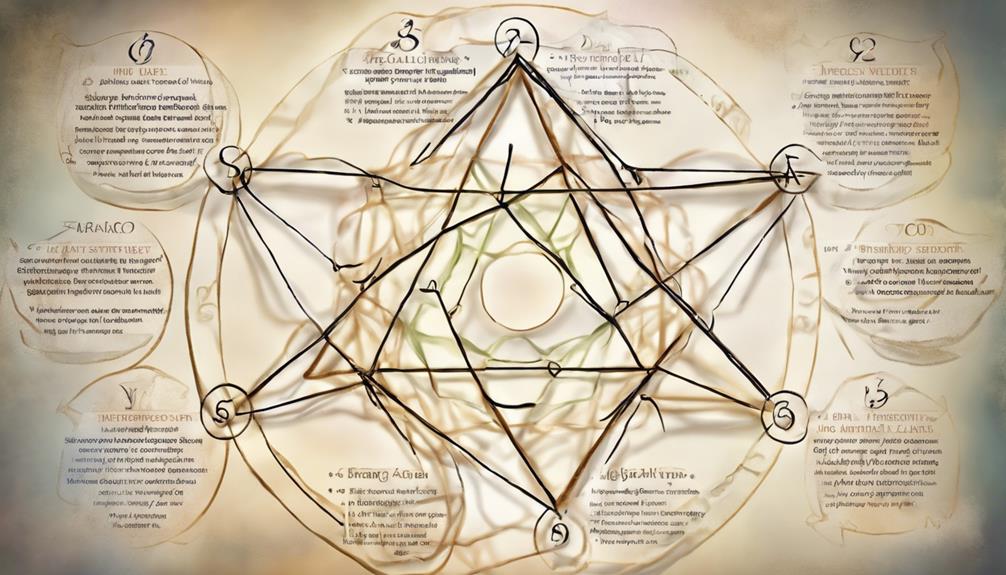
How can Enneagram Type Fours and Type Eights effectively build trust in their relationship? Trust is a vital component that strengthens the bond between Fours and Eights.
To foster trust and deepen their connection, consider the following techniques:
- Encouragement and Vulnerability: Fours trust Eights who express encouragement and show vulnerability in their interactions, creating a safe space for emotional openness.
- Confidence in Beliefs: Eights trust Fours who confidently stand up for their beliefs and values, showcasing authenticity and integrity.
- Honest and Open Communication: Building trust involves honest and open communication between Fours and Eights, where both parties share their thoughts and feelings transparently.
- Mutual Understanding and Support: Trust is nurtured through mutual understanding, support, and respect in the relationship, emphasizing empathy and validation.
- Role of Vulnerability and Honesty: Vulnerability and honesty play crucial roles in fostering trust between Enneagram 4s and 8s, creating a foundation of emotional intimacy and authenticity.
Growth Opportunities and Challenges
To navigate the growth opportunities and challenges inherent in Enneagram 4 and 8 relationships, we must actively engage in enhancing emotional intelligence and communication skills. Developing emotional intelligence allows us to understand our own and our partner's emotions better, fostering empathy and connection. Communication skills play a crucial role in navigating the power dynamics that may arise between Enneagram 4s and 8s, helping to address control issues and manage emotional intensity effectively.
| Growth Opportunities | Challenges | Personal Growth |
|---|---|---|
| Enhancing emotional intelligence | Navigating power dynamics | Developing mutual respect |
| Improving communication skills | Addressing control issues | Fostering vulnerability |
| Practicing active listening | Managing emotional intensity | Cultivating deeper connection |
Embracing personal growth in the relationship involves understanding and addressing underlying fears, insecurities, and triggers that may impact the dynamic between Enneagram 4s and 8s. By embracing conflict as an opportunity for growth, self-reflection, and deeper connection, we can evolve together and strengthen the bond between us.
Frequently Asked Questions
What Is the Relationship Between Type 8 and 4 Enneagram?
In the relationship between Enneagram Type 8 and Type 4, intensity and creativity collide. Type 4's emotional depth meets Type 8's strength. Understanding each other's vulnerabilities and embracing differences fosters a unique bond built on compassion and boldness.
Who Should Type 8s Marry?
We should marry partners who offer loyalty, support, and understanding. Compatibility with certain types ensures balance and harmony in relationships. Thriving with those who appreciate our strength, independence, and leadership enhances dynamics.
Why Are Enneagram 8s Hard to Love?
Enneagram 8s can be challenging to love due to their assertive, independent nature. Their fear of vulnerability and desire for control can create barriers to emotional intimacy. Understanding their need for autonomy is key.
What Is the Love Language of Enneagram 4?
We find that the love language of an Enneagram 4 involves deep emotional connections, meaningful conversations, acts of creativity, and thoughtful gestures. Understanding their complexities, validating emotions, and quality time exploring art are key to expressing love effectively.
Can Enneagram 4 and 2 have a successful relationship?
The enneagram 2 and 4 dynamics in a relationship can be challenging but also rewarding. While these two types may have different ways of expressing love and affection, they can learn from each other and grow together. With open communication and understanding, an enneagram 4 and 2 can have a successful and fulfilling relationship.
Conclusion
In conclusion, the relationship dynamics between Enneagram Type 4 and Type 8 individuals can be likened to a passionate dance of emotions and power. Their intense connection and contrasting qualities create a fiery yet captivating bond that's both challenging and rewarding.
By embracing their differences, communicating openly, and embracing growth opportunities, these two types can truly thrive together in a relationship that's as deep as it's dynamic.
Eugene brings a fresh, dynamic voice to our platform as one of our talented Writers. Specializing in research-driven content, he explores the latest findings in psychology and personal growth, translating them into actionable insights for our readers. Eugene’s work is fueled by a curiosity about what makes us tick and a desire to help others unlock their potential.
Enneagram of Personality
Counterphobic 6 Enneagram Traits & Insights

Did you know that within the realm of the enneagram personality system, there are distinct subtypes that reveal fascinating nuances in behavior and mindset? One intriguing subtype is the counterphobic 6 enneagram, which offers a unique lens into the fears and strategies of the individual bearing this personality type. Whether you are a counterphobic 6 yourself or simply interested in understanding this dynamic subtype, read on to uncover the key traits and insights that make them tick.
Understanding the counterphobic 6 enneagram can provide valuable insights into the fears, needs, and strategies that drive their behavior. This article will delve into their core beliefs, desires, and fears, shedding light on their self-image and tactics. By exploring the counterphobic 6’s unique approach to navigating the world, we can gain a deeper understanding of their mindset and develop strategies for personal growth and resilience.
Key Takeaways:
- Counterphobic 6 enneagram is a distinct subtype that reveals unique behaviors and thought patterns.
- The core belief of a counterphobic 6 is that the world and people are unpredictable, unreliable, and dangerous.
- Counterphobic 6s have a strong need for security, guidance, and support.
- Their core fear is to be unsafe and without support or guidance.
- Counterphobic 6s employ strategies of planning, preparation, and seeking safety nets.
Type 6’s Core Belief
A counterphobic 6’s core belief revolves around a deep conviction that the world and people are unpredictable, unreliable, and dangerous. This belief shapes their perception and leads them to feel a strong need for support and safety. Counterphobic 6s may exhibit different wing types, such as wing seven or wing five, which further influences their behavior and coping mechanisms. Understanding this core belief is essential to gain insights into the mindset of counterphobic 6s.
Counterphobic 6s believe that they must do everything in their power to ensure their own security and protection. This core belief motivates their actions and influences their interactions with others. By acknowledging the significance of this belief, we can understand better why counterphobic 6s adopt specific behaviors and strategies to navigate a world they perceive as unpredictable and unsafe.
Type 6’s Core Need
Understanding the core need of a counterphobic 6 is crucial to comprehending their behavior and mindset. Counterphobic 6s have an innate need for security, guidance, and support. This need arises from their belief that the world is unpredictable and unsafe. In order to fulfill this need, counterphobic 6s often seek external sources to provide them with a sense of safety.
Counterphobic 6s may exhibit a strong reliance on authorities or systems, looking to them as a source of security and stability. Their need for security is deeply intertwined with their anxiety and fear, driving their behaviors and decision-making. By recognizing and acknowledging this core need, we can better understand the motivations and actions of counterphobic 6s.

Type 6’s Core Fear
As a counterphobic 6, the core fear that drives your behavior is the fear of being unsafe and lacking support or guidance. You have an innate aversion to being unprepared and unable to cope with the perceived dangers of the world around you. This fear is deeply ingrained within you and fuels your relentless pursuit of security and your instinct to seek out safety nets in every aspect of your life.
Understanding this core fear is crucial in comprehending the motivations and behaviors of counterphobic 6s. It sheds light on why you may go to great lengths to establish a sense of stability and protection, and why you may be highly vigilant and proactive in managing potential threats.
Counterphobic 6s’ Fear of Being Unsafe and Unsupported
“I have an inherent fear of feeling unsafe and unsupported. It drives me to constantly seek out security and reassurance. Being unprepared and unable to cope with the unpredictability of life terrifies me. I believe that if I let my guard down, something catastrophic will happen.”
This fear may manifest in various ways in your daily life. It can drive you to constantly anticipate and plan for worst-case scenarios, ensuring that you have safety measures in place. It might lead you to rely heavily on trusted authorities or seek guidance from others, as a way to alleviate the anxiety associated with feeling unsupported.

Embracing this understanding of your core fear empowers you to navigate your fear-driven mindset with awareness and compassion. By acknowledging your fear and addressing it directly, you can embark on a journey of personal growth and develop healthier coping mechanisms to manage and overcome your anxieties.
Type 6’s Strategy and Tactics
Counterphobic 6s employ a strategic approach in their pursuit of love, security, and safety. Central to their behavior is a deeply rooted fear of being unable to cope with the challenges in a world they perceive as unpredictable and unreliable. To navigate this fear, counterphobic 6s utilize various tactics aimed at ensuring their well-being and minimizing potential risks.
One of the key tactics employed by counterphobic 6s is careful planning. They meticulously map out their actions and create detailed strategies to address potential problems proactively. By preparing safety nets in advance, they aim to mitigate any potential risks and strengthen their sense of security.
Another crucial aspect of the counterphobic 6’s strategy is finding practical solutions. They possess a problem-solving mindset and seek to identify effective ways to handle challenges and uncertainties. Their resourcefulness enables them to adapt quickly and overcome obstacles as they arise.
Counterphobic 6s often exhibit a heightened sense of self-reliance and self-protection due to their belief in an unpredictable and unreliable world. This self-reliance empowers them to take control of their safety and actively seek out security measures.
“Counterphobic 6s rely on careful planning, preparedness, and practical problem-solving to address their fear of being unable to cope in an unpredictable world.”
Understanding the strategy and tactics utilized by counterphobic 6s provides valuable insights into their mindset and behavior. Their proactive nature, attention to detail, and self-protective tendencies shape their approach to tackling life’s challenges.
| Counterphobic 6 Strategy and Tactics | Benefits |
|---|---|
| Careful Planning | – Enhanced preparedness – Minimized risks and uncertainties – Increased sense of security |
| Practical Problem-Solving | – Effective handling of challenges – Flexibility and adaptability – Quick resolution of obstacles |
| Self-Reliance and Self-Protection | – Empowerment for safety control – Active pursuit of security measures |
Type 6’s Automatic Focus of Awareness
Counterphobic 6s possess distinct tendencies and personality traits that shape their automatic focus of awareness. Rooted in their belief that the world is unpredictable and unsafe, counterphobic 6s have a heightened perception of possible problems, hidden agendas, and the unreliability of others.
This constant scanning of their environment is driven by their deep-seated fear of being unsafe and without support or guidance. It manifests as a hyper-vigilance towards potential threats, both real and perceived.
In their quest for security, counterphobic 6s are acutely aware of the dangers they anticipate, making them highly attentive to the actions and motives of those around them. This heightened awareness influences their interactions and decision-making processes.
Counterphobic Six Tendencies
The automatic focus of awareness of counterphobic 6s leads to several notable tendencies:
- Anticipating Problems: Counterphobic 6s have a natural instinct to anticipate potential problems and dangers. They are quick to identify possible risks and take proactive measures to mitigate them.
- Detecting Hidden Agendas: Their keen perception enables counterphobic 6s to detect hidden agendas and ulterior motives. They are wary of individuals or situations where they sense deceit or manipulation.
- Questioning Others: Due to their inherent skepticism, counterphobic 6s tend to question the reliability and trustworthiness of others. They seek reassurance and often challenge the intentions and actions of those around them.
Counterphobic Six Personality Traits
Understanding the counterphobic six enneagram subtype involves recognizing key personality traits exhibited by individuals with this type:
- Cautious: Counterphobic 6s approach their daily lives with caution and care. They are acutely aware of the potential risks and engage in calculated decision-making to protect themselves and others.
- Brave: Despite their core fears, counterphobic 6s display remarkable bravery. They actively confront their anxieties and take risks to prove their courage and resilience.
- Independent: Counterphobic 6s possess a strong sense of self-reliance. They rely on their own abilities and judgment, preferring to find solutions to challenges rather than depending solely on external sources.
By comprehending the counterphobic six tendencies and understanding their unique personality traits, we can gain valuable insights into their behaviors, decision-making processes, and interpersonal interactions.
| Tendency | Personality Trait |
|---|---|
| Anticipating Problems | Cautious |
| Detecting Hidden Agendas | Brave |
| Questioning Others | Independent |
Type 6’s Automatic Focus of Actions
Counterphobic 6s have a distinct automatic focus of actions in response to their counterphobic fear response. They are driven by a strong need for security and safety, which leads them to take proactive measures to mitigate potential risks. The counterphobic 6’s actions revolve around planning and preparing safety nets as a means to avoid their core fear.
Counterphobic 6s may have a tendency to over-prepare for situations, constantly seeking ways to ensure their safety and minimize potential threats. They exhibit a proactive approach to dealing with fears and anxieties, taking preemptive steps to mitigate any perceived dangers.
The Automatic Focus of Actions
| Action | Description |
|---|---|
| Planning | Counterphobic 6s engage in extensive planning to anticipate potential risks and challenges. They meticulously think through various scenarios to be prepared for any situation. |
| Preparing Safety Nets | Counterphobic 6s create safety nets in various aspects of their lives to provide them with a sense of security. These safety nets may include financial preparations, backup plans, and strong support networks. |
| Proactive Risk Mitigation | Counterphobic 6s take proactive measures to mitigate potential risks and threats. They actively seek out solutions and strategies to navigate through challenging situations and minimize any potential harm. |
This constant focus on planning and preparing helps counterphobic 6s alleviate their fears and maintain a sense of control. It allows them to feel more secure and confident in an unpredictable world.
The image below captures the essence of a counterphobic 6’s automatic focus of actions:
Type 6’s Self-Image
Counterphobic 6s possess distinct characteristics that shape their self-image. These individuals see themselves as:
- Loyal: Counterphobic 6s value steadfast commitment and dedication, particularly in relationships and causes they believe in.
- Careful: They take a cautious approach to life, carefully considering potential risks and taking measures to protect themselves.
- Prepared: Counterphobic 6s pride themselves on being prepared for any situation, often anticipating potential dangers and taking proactive steps to mitigate them.
- Dedicated: These individuals are unwavering in their pursuit of security and safety, showing a deep dedication to achieving their goals and maintaining stability.
- Hardworking: Counterphobic 6s are known for their strong work ethic, consistently putting in the effort to ensure their own well-being and that of others.
Understanding counterphobic 6s’ self-image is crucial for comprehending their behavior within the context of their counterphobic tendencies.
Embracing Growth: Overcoming Counterphobic Tendencies
While counterphobic tendencies are deeply ingrained, individuals with type 6 enneagrams can overcome them through self-awareness and personal growth. Here are a few strategies:
- Therapy or Counseling: Seeking professional guidance can help counterphobic 6s explore the roots of their fears and develop healthier coping mechanisms.
- Building Trust: Fostering trusting relationships and gradually stepping out of their comfort zones can allow counterphobic 6s to challenge their need for constant vigilance and find security within themselves and their support networks.
- Mindfulness and Meditation: Practicing mindfulness techniques and meditation can help counterphobic 6s cultivate a sense of inner calm, reducing underlying anxiety and fears.
- Embracing Vulnerability: Allowing themselves to be vulnerable and accepting their imperfections can help counterphobic 6s let go of their need for control and embrace the unpredictability of life.
- Self-Reflection and Journaling: Engaging in self-reflection exercises and journaling can provide counterphobic 6s with insights into their fears, allowing them to challenge and reframe their thought patterns.
By utilizing these strategies, counterphobic 6s can gradually overcome their tendencies and develop a balanced approach to life, embracing both the need for security and the richness of uncertainty.
Type 6’s Gifts (Healthy/Balanced/High Level of Development)
When counterphobic 6s are in a healthy and balanced state, they possess remarkable gifts that contribute to their overall well-being and personal growth.
- Warm-hearted: Counterphobic 6s are known for their genuine compassion and empathy towards others. They have a natural ability to create a warm and welcoming environment, making those around them feel valued and supported.
- Cooperative: Collaboration and teamwork come naturally to counterphobic 6s. They thrive in group settings and are often the ones who bring people together to achieve common goals.
- Reliable: Count on a counterphobic 6 to be there when you need them. They take their commitments seriously and can always be relied upon to follow through on their promises.
- Committed: Once a counterphobic 6 is invested in something or someone, their dedication knows no bounds. They approach their endeavors with unwavering commitment, ensuring that they always give their best effort.
- Droll sense of humor: Counterphobic 6s have a delightful sense of humor that often involves clever wit and subtle irony. Their ability to find humor in even the most challenging situations brings levity and laughter to those around them.
In addition to these gifts, counterphobic 6s possess a unique blend of fearlessness and caution. They have the ability to be bold and courageous without disregarding potential risks or dangers. This balanced approach to life allows them to navigate uncertain situations with poise and confidence.
Understanding these gifts is crucial for counterphobic 6s on their journey of personal development. By harnessing their warm-heartedness, cooperation, reliability, commitment, and droll sense of humor, they can embrace their full potential and make significant contributions to both themselves and those around them.
Let’s now take a closer look at the differences between counterphobic 6s and phobic 6s to gain a comprehensive understanding of the 6 enneagram type.
Counterphobic 6 vs Phobic 6
When exploring the 6 enneagram type, it’s important to understand the distinction between counterphobic 6s and phobic 6s. While both subtypes share a common fear and anxiety, their response and behavior differ significantly.
Counterphobic 6s take an active approach in confronting their fears and anxieties. They often challenge authorities and take risks to prove their bravery. This counterphobic behavior stems from their belief that the world is unpredictable and unsafe. By facing their fears head-on, they attempt to gain a sense of control and security in a potentially dangerous environment.
“Courage is not the absence of fear, but the triumph over it.”‘ – Nelson Mandela
On the other hand, phobic 6s tend to avoid or retreat from their fears. They seek safety and comfort in conformity, relying heavily on authorities and established systems. Their fear response is rooted in a deep need for security and guidance. Phobic 6s believe that by staying within the boundaries set by others, they can mitigate potential risks and maintain a sense of safety.
Understanding the differences between counterphobic 6s and phobic 6s can shed light on the various manifestations of the 6 enneagram type. While both subtypes share a core fear, their approaches to managing and confronting that fear differ greatly.
Now, let’s dig deeper into the unique traits and characteristics of each subtype to gain a comprehensive understanding of the counterphobic 6 enneagram type.
Conclusion
Understanding the counterphobic 6 enneagram subtype is essential for navigating the mindset of individuals with this personality type. Counterphobic 6s hold a belief that the world is unpredictable and unsafe, driving them to seek security and safety in various ways. By recognizing their unique traits and behaviors, we can provide support and develop strategies for their personal growth and resilience.
Counterphobic 6s employ growth strategies that involve actively confronting their fears through planning, preparation, and proactive measures. They possess a fear response that drives them to challenge authorities and take calculated risks to prove their bravery. By acknowledging their fear response and helping them navigate it, we can empower counterphobic 6s to overcome obstacles and thrive.
To effectively support individuals with a counterphobic 6 mindset, it is crucial to provide a safe and secure environment. Encouraging open communication and fostering a sense of trust can help counterphobic 6s feel more grounded and assured. By offering guidance and understanding, we can help them channel their energy towards personal growth and emotional well-being. Counterphobic behavior in Enneagram Type 6 can manifest as an extreme aversion to perceived threats. Individuals may actively confront their fears to prove their bravery and competence. This intense response is a result of their underdeveloped understanding enneagram 1 stress responses and their desire to feel secure in the face of uncertainty. The core belief of a counterphobic 6 is that the world and people are unpredictable, unreliable, and dangerous. The core need of a counterphobic 6 is security, guidance, and support. The core fear of a counterphobic 6 is to be unsafe and without support or guidance. Counterphobic 6s seek love, safety, and security while avoiding their fear of being unable to cope. They plan, prepare safety nets, and find solutions to potential problems. Counterphobic 6s have an automatic focus on possible problems, hidden agendas, and the unreliability of others. The automatic focus of actions for counterphobic 6s is planning and preparing safety nets to mitigate potential risks. Counterphobic 6s perceive themselves as loyal, careful, prepared, dedicated, and hardworking. When in a healthy state, counterphobic 6s can be warm-hearted, cooperative, reliable, committed, and possess a droll sense of humor. Counterphobic 6s actively confront their fears and anxieties, while phobic 6s tend to avoid or retreat from their fears. By understanding the unique traits and behaviors of counterphobic 6s, we can develop strategies for personal growth and resilience.How Does Counterphobic Behavior Manifest in Enneagram Type 6?
FAQ
What is the core belief of a counterphobic 6 enneagram subtype?
What is the core need of a counterphobic 6?
What is the core fear of a counterphobic 6?
What strategy and tactics do counterphobic 6s employ?
What is the automatic focus of awareness for counterphobic 6s?
What is the automatic focus of actions for counterphobic 6s?
How do counterphobic 6s perceive themselves?
What are the gifts of a healthy and balanced counterphobic 6?
How are counterphobic and phobic 6s different?
What can we learn from counterphobic 6 enneagram subtype?
Eugene brings a fresh, dynamic voice to our platform as one of our talented Writers. Specializing in research-driven content, he explores the latest findings in psychology and personal growth, translating them into actionable insights for our readers. Eugene’s work is fueled by a curiosity about what makes us tick and a desire to help others unlock their potential.
Enneagram of Personality
7 Best Enneagram 3 and 8 Relationship Tips
Fascinating insights into how Enneagram Type 3s and Type 8s can enhance their relationship dynamics await in these surprising relationship tips.

When it comes to the interaction between Enneagram Type 3s and Type 8s, there are some relationship tips that may catch you off guard with how well they work. Recognizing how these two types can support each other is only the starting point of an intriguing path towards a more harmonious relationship.
By uncovering the nuances of effective communication, conflict resolution, trust-building, and collaboration, we can unlock the potential for growth and mutual support in this unique pairing.
Key Takeaways
- Foster trust through honest and transparent communication.
- Set clear goals and collaborate on achieving them together.
- Address conflicts promptly and constructively with empathy.
- Manage stress and support each other's emotional well-being effectively.
Effective Communication Strategies
To foster a strong connection between Type 3s and Type 8s, it's essential for both partners to engage in clear and open communication, addressing conflicts calmly and seeking mutually beneficial solutions. Type 3s are often achievement-oriented, seeking validation and admiration, while Type 8s are assertive and value honesty and directness. When communicating, Type 3s should express their feelings and needs openly, allowing Type 8s to understand them better. Similarly, Type 8s should be direct yet considerate of Type 3s' sensitivity, fostering trust and mutual understanding.
In conversations, both Type 3s and Type 8s should strive to listen actively to each other's perspectives. Type 3s can benefit from the straightforward nature of Type 8s, while Type 8s can appreciate the emotional depth that Type 3s bring to the relationship. By actively engaging in dialogue, these types can navigate challenges effectively and build a solid foundation based on trust and respect. Effective communication lays the groundwork for resolving conflicts and maintaining a healthy dynamic between Type 3s and Type 8s.
Conflict Resolution Techniques
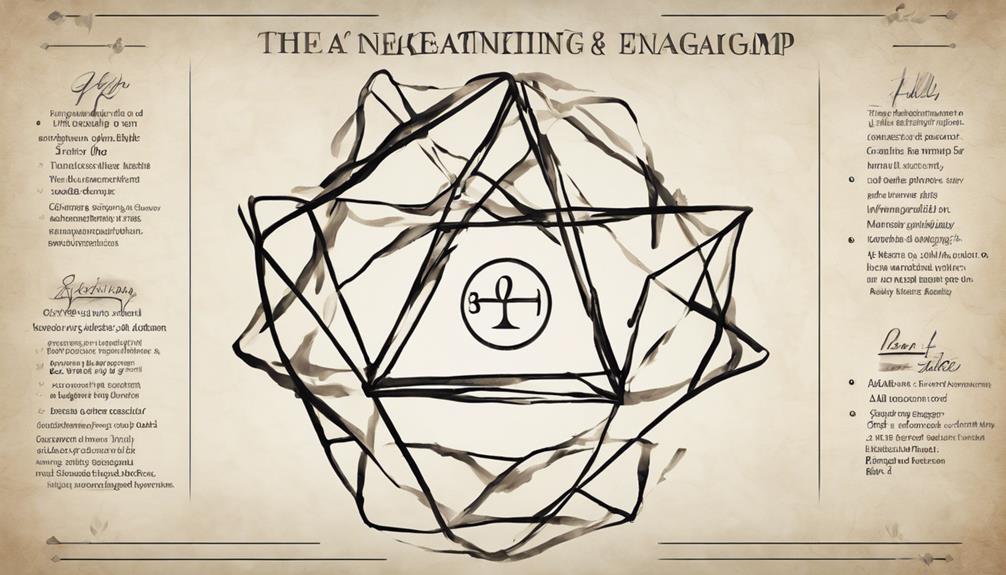
When resolving conflicts between Enneagram Type 3s and Type 8s, it's crucial to approach disagreements logically and calmly. Both Types value efficiency and assertiveness, so addressing issues openly and directly can lead to effective resolution.
Encourage active listening and empathy from both parties to truly understand each other's perspectives. By focusing on finding solutions that benefit both individuals, the relationship can grow stronger through conflict.
It's important to steer clear of manipulation or control tactics during disagreements to maintain trust and respect in the relationship. Establishing clear communication channels beforehand can help prevent misunderstandings and promote more effective conflict resolution.
Building Trust and Transparency
We understand that building trust and transparency in a relationship can be challenging yet essential for growth.
Honest communication and mutual understanding are key pillars in fostering a strong connection between Enneagram 3s and 8s.
Let's explore how these elements can strengthen the bond between these two types.
Honest Communication
Effective and open communication lays the groundwork for trust and transparency in Enneagram 3 and 8 relationships. To nurture this essential foundation, consider the following tips:
- Listen Wholeheartedly: Engage in active listening to understand your partner's perspective fully.
- Express Vulnerability: Share your thoughts and emotions openly to foster a deeper connection.
- Be Direct Yet Kind: Communicate your needs and boundaries clearly while considering your partner's feelings.
Mutual Understanding
To foster trust and transparency in Enneagram 3 and 8 relationships, it's essential to cultivate a deep mutual understanding between partners. Trust is nurtured when Threes acknowledge and appreciate the support Eights provide, while Eights value the competence and abilities of Threes.
Communication plays a vital role in building this trust, with Eights relying on direct and genuine interactions from Threes to feel secure. Both partners should strive for transparency, creating a safe space for open dialogue. Consistency and honesty from Eights help Threes feel valued and build a foundation of trust.
Mutual understanding is the cornerstone of a strong relationship, where open and transparent communication establishes a deep connection and fosters trust between Enneagram 3s and 8s.
Collaborating and Achieving Goals
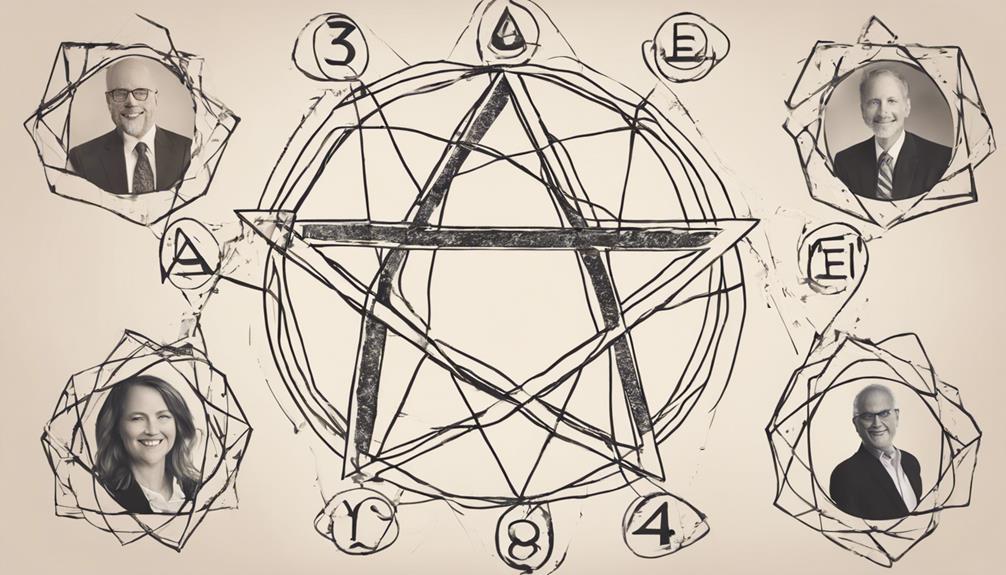
Let's focus on setting clear objectives and effectively sharing responsibilities to enhance our collaboration and goal achievement.
By establishing concrete goals, we can align our efforts and stay motivated throughout our endeavors.
Sharing responsibilities ensures a balanced workload and fosters a sense of teamwork as we work towards success together.
Setting Clear Objectives
When setting clear objectives in a relationship between Enneagram 3 and 8 personalities, it's crucial to clearly define individual and shared goals to ensure alignment and focus.
Here are key steps to help you collaborate effectively:
- Establish Clear Goals: Define specific objectives that resonate with both Enneagram 3's drive for achievement and Enneagram 8's desire for success.
- Set Timelines and Milestones: Create a roadmap with achievable milestones to track progress together and celebrate achievements along the way.
- Use SMART Techniques: Implement SMART (Specific, Measurable, Achievable, Relevant, Time-bound) goal-setting strategies for clarity and effectiveness in reaching your relationship goals.
Sharing Responsibilities Effectively
Sharing responsibilities effectively in a relationship between Enneagram 3 and 8 personalities involves coordinating tasks and leveraging individual strengths to achieve common goals with efficiency and collaboration. Threes can excel in managing public relations and image-building tasks, while Eights are adept at making quick decisions and providing clear direction for shared goals. By dividing responsibilities based on these strengths, both partners can maximize efficiency and productivity. Collaborative goal-setting and task allocation are key to ensuring that each partner feels valued and empowered in the relationship. Effective communication about roles and expectations is essential for Threes and Eights to work together seamlessly towards their objectives.
| Enneagram Type | Responsibilities |
|---|---|
| Three | Managing public relations and image-building tasks |
| Eight | Making quick decisions and providing clear direction for shared goals |
Navigating Changes and Challenges
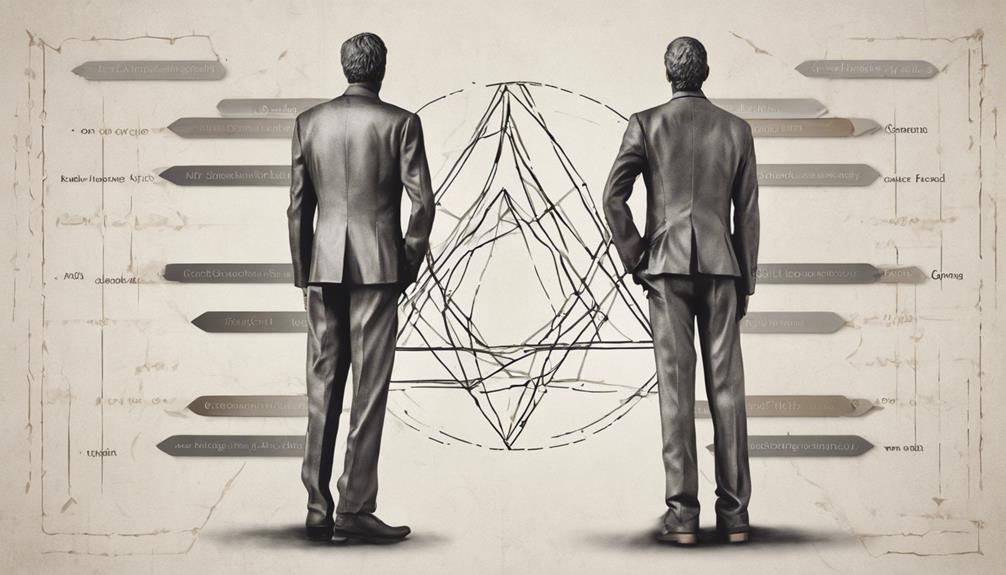
During times of change and challenge, Threes and Eights can lean on their shared resilience and adaptability to navigate the ups and downs of their relationship. Here are some tips to help you navigate changes and challenges together:
- Embrace Growth Opportunities: Both Threes and Eights thrive in dynamic environments and view challenges as chances for personal and relational development. By approaching change with a growth mindset, you can strengthen your bond and individual resilience.
- Offer Understanding and Support: Eights may struggle with feeling limited in their personal freedom during times of change. Threes can provide understanding and support by acknowledging these feelings and working together to find a balance that makes both partners feel safe and valued.
- Communicate Effectively: Effective communication is essential for navigating changes and challenges. Openly sharing thoughts, feelings, and needs can help Threes and Eights support each other through uncertainties and maintain a strong connection during turbulent times.
Managing Stress and Tension

Recognizing and addressing signs of stress is crucial for maintaining a healthy and balanced relationship between Enneagram Threes and Eights. In times of tension, trouble spots can arise, such as increased competition and decreased support within the relationship. Enneagram Threes may feel insecure and image-conscious, impacting the dynamic between the partners.
On the other hand, Eights might respond to stress with controlling behaviors, affecting trust and shared goals. It's essential for both partners to communicate openly about their feelings and fears during stressful periods to prevent unaddressed stress from escalating into intense conflicts that could potentially lead to a breakdown in the relationship.
Encouragement and Motivation Tactics

To foster a strong and supportive relationship between Enneagram Threes and Eights, it's essential to actively encourage and motivate each other through open communication and positive reinforcement. Here are some effective tactics to provide encouragement and motivation:
- Encourage open communication: By creating a safe space for sharing feelings and needs, both partners can feel comfortable expressing themselves honestly, leading to a better understanding of each other's motivations and desires.
- Provide positive reinforcement: Acknowledging and celebrating achievements, whether big or small, can significantly boost motivation and confidence in the relationship, fostering a supportive and uplifting environment.
- Set clear goals and celebrate accomplishments: Establishing shared objectives and milestones allows both individuals to work towards common aspirations, and celebrating these successes together reinforces the bond and keeps motivation levels high.
Frequently Asked Questions
Do Enneagram 8 and 3 Get Along?
Yes, Enneagram 8 and 3 can get along well. Both share a drive for success, leading to a dynamic relationship. They complement each other's strengths, although conflicts may arise. Personal growth and understanding each other's Enneagram traits are vital for a strong bond.
Who Should Enneagram Type 3 Marry?
We should marry someone who appreciates our drive and supports our ambitions, like an Enneagram Type 8, fostering personal and professional growth. Finding a partner who values our goals is key to a fulfilling relationship.
Are 3 and 8 Compatible?
We find 3 and 8 compatibility promising, blending ambition and strength. Challenges surface with trust and control dynamics. Awareness of each other's needs and growth areas fosters a harmonious bond. Understanding and respect pave the way for a fulfilling relationship.
Who Should Type 8s Marry?
We should marry partners who appreciate our strength, honesty, and independence. Finding someone supportive, trustworthy, and aligned with our goals is key. It's crucial to be with someone who can handle our intensity and passion.
Conclusion
As we navigate the journey of building a strong relationship between Enneagram Type 3s and Type 8s, remember to embrace challenges like a ship sailing through rough waters.
By communicating openly, resolving conflicts promptly, and supporting each other through changes, we can create a bond that withstands the test of time.
Let's continue to encourage and motivate each other, knowing that our partnership is like a well-oiled machine, capable of achieving great things together.
Eugene brings a fresh, dynamic voice to our platform as one of our talented Writers. Specializing in research-driven content, he explores the latest findings in psychology and personal growth, translating them into actionable insights for our readers. Eugene’s work is fueled by a curiosity about what makes us tick and a desire to help others unlock their potential.
-

 Self-Understanding3 months ago
Self-Understanding3 months agoUnderstanding DMCA Protections & Compliance
-

 Enneagram of Personality2 weeks ago
Enneagram of Personality2 weeks agoEnneagram Test: Printable Version for Easy Self-Discovery
-

 Relationship Dynamics3 months ago
Relationship Dynamics3 months agoCan a Man Truly Love His Side Chick
-

 Personality Exploration3 weeks ago
Personality Exploration3 weeks agoDiscover Your Traits with Atomic Habits Personality Test
-

 Personality Exploration3 months ago
Personality Exploration3 months agoDOPE Personality Test Explained: Traits & Types
-
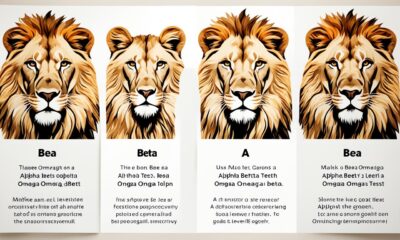
 Personality Exploration3 weeks ago
Personality Exploration3 weeks agoAlpha Beta Omega Personality Test Explained
-

 Personality Exploration3 months ago
Personality Exploration3 months agoAlpha Beta Omega Sigma Female Personality Quiz
-

 Personality Exploration3 months ago
Personality Exploration3 months agoUnderstanding Personality Tests | Our Guide Explained
